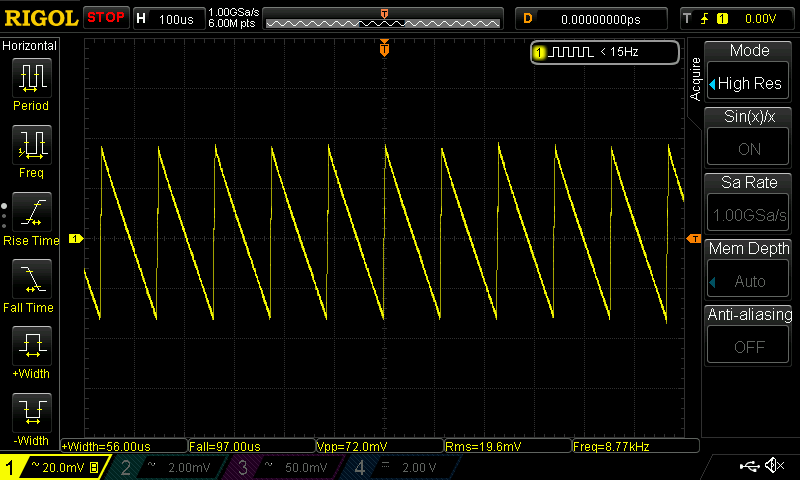I have a design that includes the TPS610985 for supplying 3.0V system voltage from 2xAA Alkaline cells.
On some of my boards I encountered noise related issues. After some measurements I found that some boards had a large ripple (40-100 mVpp) on the power rail. The input voltage is around target voltage (2.8 ~ 3.0V).
System in active mode (medium draw 5-10mA):
System in sleep/idle mode (low draw < 50 uA):
When the load decreases (when the system goes in normal/sleep mode, draw is < 50uA) frequency decreases, when adding a 500Ohm test load across the power rail the frequency increases. The ripple amplitude stays fairly constant. Most of the boards I have don't seem to have this problem however. The good boards have a ripple < 10mV (if any) and only show a short transient when (dis)connecting loads.
Here's the layout of the DC converter:
C2: 10uF MLCC input cap
C3: 100nF MLCC Vin decoupling
R3: 400Ohms
C4: 1uF MLCC VSub buffer
C5: 10uF MLCC VMain output cap (also tried 22uF)
L1: 4.7uH wire wound inductor (ferrite core, LQH3NPN4R7MMRE)
Maybe the (charge level, type) of the batteries plays a role? Could it be the inductance of the traces from the batteries to the converter cause the instability? Any comments on the layout? (in the next rev. I will put in a bunch of gnd-vias)
Ps. The device is running in the low-power mode (but switched when current > 10mA is drawn).
Thanks for looking into this!




